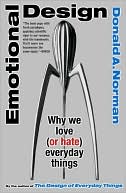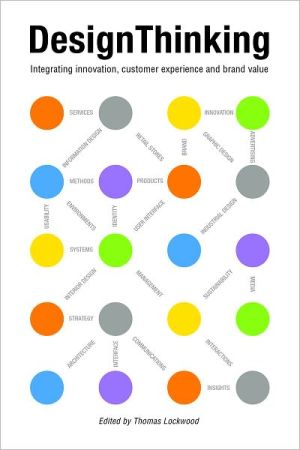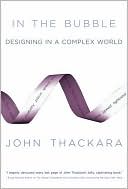Commercializing Great Products with Design for Six SIGMA
Search in google:
Optimize Every Stage of Your Product Development and CommercializationTo remain competitive, companies must become more effective at identifying, developing, and commercializing new products and services. Design for Six Sigma (DFSS) is the most powerful approach available for achieving these goals reliably and efficiently. Now, for the first time, there's a comprehensive, hands-on guide to utilizing DFSS in real-world product development.Using a start-to-finish case study, a practical roadmap, and easy-to-use templates, Commercializing Great Products with Design for Six Sigma shows how to optimize every stage of product commercialization. Drawing on a combined sixty-five years of product experience, the authors show how to make better product and portfolio decisions; develop better business cases and benefits assessments; create better concepts and designs; scale up manufacturing more effectively; and execute better launches.Learn how to Establish infrastructure to support successful commercialization Use Stage-Gate® processes to minimize risk and optimize the use of people and resources Create better plans: Segment markets, define product value, estimate financial value, and position new products for success Capture the "Voice of the Customer," analyze it, and use it to drive development Choose the right tools: Ideation, Pugh Concept Selection, QFD, TRIZ, and many more Develop better products and processes: Process Maps, Cause and Effects Matrices, Failure Modes and Effects Analysis, Statistical Design and Data Analysis Tools, and more Test and improve product performance and reliability Perform Post Mortems and apply what you've learned to your next projectWhether you're an executive, engineer, designer, marketer, or quality-control professional, Commercializing Great Products with Design for Six Sigma will help you identify more valuable product concepts and translate them into high-impact revenue sources.
Preface ix Acknowledgments xvii About the Authors xix Section I Getting Started 1 Chapter 1 What Is Design for Six Sigma? 3Design for Six Sigma Defined 3The Risk of Development 4A Little History 5An Overview of the Methodology 7Chapter 2 The Business Case for DFSS 11The Product Life Cycle 11Where Have All the Vacuum Tubes Gone? 13Understanding Dynamic Markets: The Kano Model 15The Role of DFSS 18Chapter 3 Six Sigma Financial Metrics 21Candy Wrapper Film: A DFSS Case Study 21How to Measure Success in a DFSS Project 22The Cost of Long-Term Variation 33Chapter 4 Project Identification and Portfolio Management 41Linking Projects to Strategy 41The Project Charter 42DFSS Projects Linked to Financial Results 43Project Hopper and Pipeline Management 46Managing the Commercialization Pipeline 48Technology Platform Projects 48Project Pipeline Scorecard 48Chapter 5 Stage-Gate Processes 51The Stage-Gate Structure 51Stage-Gate 1: Opportunity Assessment 53Stage-Gate 2: Market Analysis and Product Definition 55Stage-Gate 3: New Product Concept Finalized 55Stage-Gate 4: Design of the New Product and Supporting Manufacturing Process 58Stage-Gate 5: Validate Product and Process Design 58Stage-Gate 6: Product Launch Plan 60Managing the Stage-Gate Process 62Chapter 6 Project Management 67DFSS Project Roadmaps 67Developing the Project Schedule 69Project Schedule Management 73Good Project Management 74Section II Preparing the Business Plan 75 Chapter 7 Business Plan Overview 77Review of the Business Plan at Gate 3 77Components of the Business Plan 77Chapter 8 Market Segmentation 83The Financial Value of Market Segmentation 83Developing the Segmentation Strategy 89Chapter 9 Identifying Market Opportunities 93The SWOT Analysis 93Developing the Ratings by Market Segment 95SWOT Analysis Results 97The Market FMEA 98Chapter 10 Defining Product Value 101The Value Concept 101Making Quality a Weapon 102Mapping the Value Chain 105Tools for Defining Value 107Chapter 11 Estimating Financial Value 109Calculating the Project Value 109How to Handle Fixed Costs 110Examining the Project Returns 115Chapter 12 Product Positioning 123The Market Perceived Quality Profile 123Product Positioning Maps 129Section III The Voice of the Customer 131 Chapter 13 Concept Development 133The Concept Development Process 133Concept Development Applications 135Advantages of the Concept Development Process 135Chapter 14 Developing the Interview Guide 139Developing a Purpose Statement 139Identifying and Listing Five to Ten Bullet-Point Interview Objectives 140Developing a Customer Selection Matrix 141Creating the Interview Guide Questions 143Chapter 15 Conducting Customer Interviews 151Preparing for the Interviews 151Interview Team Roles 152Conducting the Interview 153Debriefing the Interview 155Good Project Management of the Interview Process 155Practice, Practice, Practice 156Chapter 16 KJ Analysis 157An Overview of the KJ Process 158The Image KJ 158The Requirements KJ 168The Next Steps 178Chapter 17 Relative Importance Survey 179Designing and Conducting the Survey 179Analyzing the Survey Results 183Identifying Requirements in Kano Terms 185Chapter 18 Ideation 187The Ideation Process 187Ideation in the Candy Wrapper Film Case Study 190Chapter 19 Pugh Concept Selection 193 The Pugh Concept Selection Process 194Pugh Concept Selection in the Candy Wrapper Film Case Study 198Chapter 20 QFD 199 The Value of QFD 199Executing the QFD 201The QFD Flowdown 206QFD across the Value Chain 209Some Final Thoughts 215Chapter 21 TRIZ 217Technical Contradictions 218The TRIZ Methodology 218Some Final Thoughts on TRIZ 229Chapter 22 Critical Parameter Management 231Documenting Critical Information from the QFD 232The Critical Parameter Scorecard 232The Benefits of Using Critical Parameter Scorecards 236Section IV Product/Process Development 239 Chapter 23 Process Mapping 241 Types and Uses of Process Maps 241The Process Variables Map 241The "As-Is/Can-Be" Process Map 247Some Final Thoughts on Process Mapping 249Chapter 24 Cause and Effects Matrix 251Comparing C&E Matrix and QFD3 251Developing the C&E Matrix 252Using the C&E Matrix Output 257Chapter 25 Failure Modes and Effects Analysis 263 Two Types of FMEA in New Product Development 263The Design FMEA 264The Process Design FMEA and the Process Manufacturing FMEA 271Chapter 26 Statistical Analysis Tools Overview 275 Variation in Product and Process Development 275Some Basic Statistics 279Graphical Analysis Techniques 282Numerical Descriptive Statistics 301A Look Ahead 303Chapter 27 Measurement Systems Analysis 307Measurement System Error 307The Impact of Measurement Error in Development 308Assessing Measurement System Usefulness 309Conducting a Measurement System Study 316Long-Term Measurement System Assessments 322Chapter 28 Process Capability 323Using the Normal Distribution Curve to Estimate Waste 323Short-Term Process Capability Analysis 325Long-Term Process Variation: The Shift 326Designing for Six Sigma Performance 329Revisiting the Cp Statistic 330The Cpk Statistic 332Long-Term Process Capability Analysis 335Interpreting the Capability Indices 336Capability Analysis in Minitab 337Ensuring Measurement System Adequacy 341Process Capability for Attribute Data 343The Importance of Process Capability 344Chapter 29 Tools for Data Analysis 347General Methods of Data Analysis 347Hypothesis Testing 348Sample Size Calculation 350Comparing a Process Mean to a Target Value 352Comparing Means and Standard Deviations from Two Film Samples 359Comparing Two Variances 364Comparing Two Means: 2-Sample t-test 364Comparing 2 Medians: The Mann-Whitney Test 367Comparing Two Means: Paired Comparisons 367Assessing Means and Standard Deviations: Con*dence Interval 371Comparing Means and Standard Deviations from More Than Two Samples 374Comparing Variance 377Comparing Means: One-Way ANOVA 379Comparing Medians: Kruskal-Wallis Test 384Data Comparison Tools Summary 385Correlation Analysis 385Regression Analysis for a Single Input Variable 388Multiple Regression Analysis 394Correlation and Regression Analysis Summary 400References 400Chapter 30 Design of Experiments 401Full Factorial Designs 401Fractional Factorial Designs 415Response Surface Designs 424Choosing an Experimental Design 430References 432Chapter 31 Robust Design 433Quantifying Robust Design Performance 433The Taguchi Approach to Robust Design 435Robust Design Example 438Alternative Approaches to Robust Design 442Dealing with Variation 447Chapter 32 Mixture Experiments 449Mixture Equations 449Mixture Designs 451Creating Mixture Designs in Minitab 451Analyzing a Mixture Design Experiment 455Response Surface Study for a Mixture Investigation 458Choosing a Mixture Design 466References 468Chapter 33 Seeking an Optimal Solution 469The Multiple Response Optimization Process 470Three-Response Optimization 477Monte Carlo Simulation in Optimization 481Multiple Response Optimization Final Thoughts 488Chapter 34 Design for Reliability 491A Roadmap for Reliability 491Design for Reliability 493Identifying Reliability Requirements: VOC 493Reliability Expectations and the Kano Model 494Customer Reliability Expectations 495Typical Reliability Metrics 495The Hazard Function 498Types of Reliability Tests 503Reliability and Failure Modes and Effects Analysis 506Reliability Functions and Mathematical Models 508Types of Distributions and the Hazard Function 511Reliability Modeling Using Minitab Software 512The Implications of Product Reliability on Warranty Costs 516Chapter 35 Statistical Tolerancing 519Worst Case Analysis 520Root Sum of Squares Analysis 521Six Sigma Tolerance Analysis 525Chapter 36 Production Scale-up 541Confirming the Product 542Design for Manufacturability Assessment 550Scaling up the Product 553Chapter 37 Control Plans 559Developing a Control Plan 560The Final Control Plan Package 572Section V Product Launch and Project Post-Mortem Analysis 575 Chapter 38 Product Launch and Project Post-Mortem Analysis 577Product Launch Planning 577Project Post-Mortem Analysis 583Conclusions 588Appendix A Glossary 589 Appendix B Abbreviations 599 Index 601








